Burn Scar Treatment: What You Need To Know For Fast Healing
Give your skin the proper care it needs with a good mix of natural and modern methods.
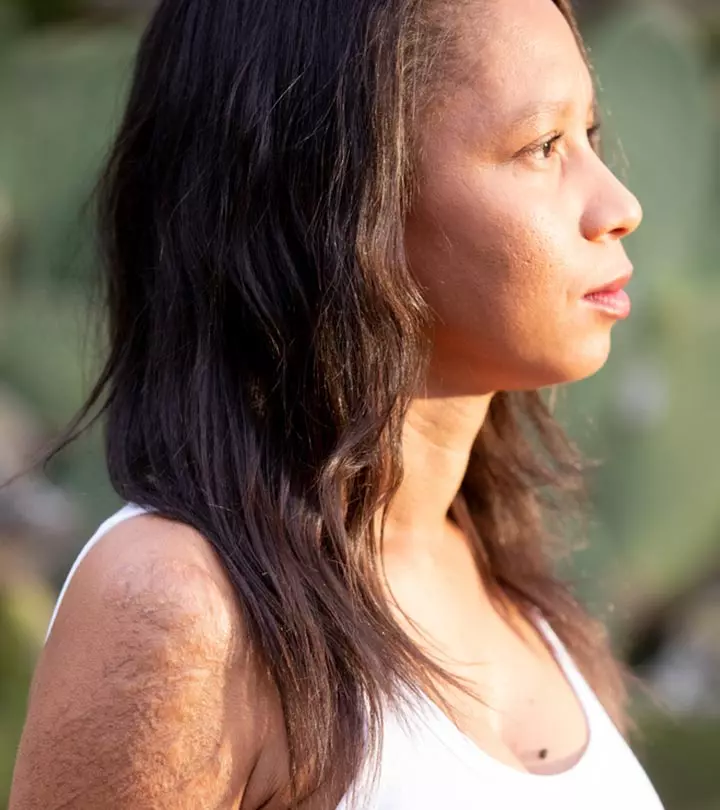
Image: Shutterstock
Burn scars develop when the skin is healing from second or third-degree burns. They can be not only physically but also emotionally distressing. Hence, proper care and dermatological management is essential for effective rehabilitation of people with burn scars, including wound care. Worry not, proper burn scar treatments can help you manage them. The treatment and healing process also depends a lot on initial burn management. The scars may take months or years to heal, depending on their severity and depth of damage. This article discusses the types of burn scars, processes to address them, and a few home remedies for scar management. Keep reading.

In This Article
Types Of Burn Scars
First-degree burns (or superficial burns) are mild and affect only the outer layer of the skin (epidermis), and do not cause scarring.
Second-degree burns affect the second layer of the skin (dermis) and cause scarring. Third-degree burns may cause severe scarring and contracture (affecting the movement of muscles and joints), damage the nerve endings, and may even turn the skin black or white. Scars caused by third-degree burns may take years to heal.
Burns may cause any of the three types of scarring:
1. Hypertrophic Scars
They are elevated scars and may feel itchy and warm to touch.
They may appear reddish or pinkish and are thicker, firmer, more vascular than the normal scars, and may take years to heal. Hypertrophic scars usually do not extend over the margin of the wound and tend to regress over time (1).
2. Keloid Scars
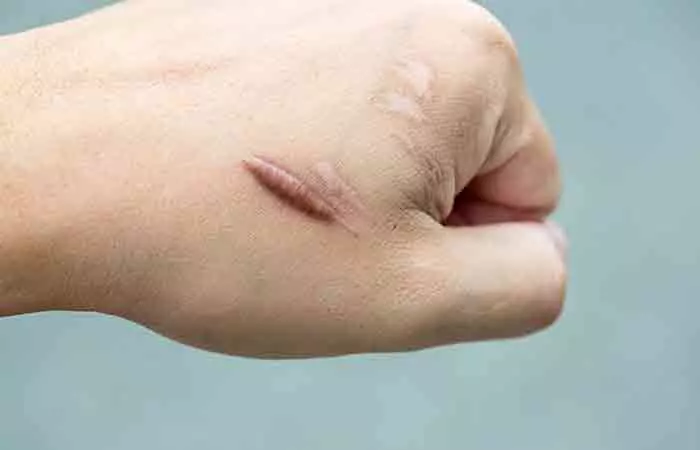
Keloid scars look like raised, mildly tender tumors (1). They have a shiny surface and initially have pink or purple color and later become brownish-red. Keloid scars continue to grow beyond the actual wound margin.
3. Contracture Scars
Third-degree burns often cause contracture scars (2). They tighten the skin, muscles, and tendons to limit your free range of motion, making it harder to carry on day-to-day activities.
Regardless of how severe or minor a burn scar is, there is a treatment available for fast healing and improve them aesthetically. The treatment depends on the type of scars. If you have contracture scars that affect your mobility, the doctor may have to go for surgical procedures. In the following section, we have listed the possible treatment options to heal burn scars.
Key Takeaways
- First-degree burns are superficial and do not scar, whereas second-degree and third-degree burns can cause moderate to severe scarring as they heal.
- Invasive treatment options for burn scars include laser, skin graft, flap surgery and tissue expansion.
- You can also opt for non-invasive treatment options like deep moisturizing, massage therapy, compression garments, and cortisone shots.
Burn Scar Treatment: Invasive And Non-Invasive Procedures
Invasive Procedures For Severe Burn Scars
1. Laser Treatment
Laser treatment, especially ablative lasers, has the potential to improve the appearance of burn scars significantly
(3). They lessen the pigmentation and thickness of the scars and are recommended for scar contractures to relieve tightness and improve mobility. The results may take weeks to show up.
2. Skin Grafts
This is a reconstructive surgery where the scarred skin is replaced with a piece of skin from a healthy area on your body, usually the inner thighs (4). The doctor may also source healthy skin from a donor. The burned area is cleaned up, and the new skin is used to cover it. Gradually, the area heals and smoothens out.
However, you should be aware that this process might not give the most aesthetically pleasing results. There may be some skin texture irregularities or discoloration. This process is used for contracture scars caused by third-degree burns.
 Trivia
TriviaModern-day skin grafting takes inspiration from ancient Ayurvedic texts. The first skin grafting procedures were performed more than 3000 years ago in India.
3. Flap Surgery
Unlike skin grafting, where the skin is taken without the blood, a flap is transferred with its blood supply to cover the scarred area. This procedure helps in reconstructing the entire scarred area. In addition, flap surgery provides effective aesthetic results at both donor sites and recipient sites (4).
4. Tissue Expansion
This technique is widely used for reconstructive surgeries (5). In this procedure, a silicone balloon called a tissue expander is put under healthy skin and filled with a saline solution to expand it and the skin. The tissue expander is removed, and the expanded skin is used to cover up the scarred area to replace burned tissues.
This procedure is effective in increasing the area of healthy skin tissues available for scar reconstruction. The affected area is covered with tissues with similar color and texture, reducing skin irregularities.
6. Z Plasty Technique
This technique is beneficial in reviving burn scars without skin removal or transfer. In Z plasty, a Z-shaped incision is made on the scar tissue to relax skin tension lines and change the direction of the scar (6). Z plasty is widely used to treat burn contractures.
 Did You Know?
Did You Know?Surgical procedures to treat burn scars are not done before the scars mature. Unhealed or vascular scars can bleed during the process, impacting the results of the surgeries.
Apart from the treatments mentioned above, you can opt for non-invasive, topical treatments to improve the appearance of the scar tissues.
Non-Invasive Procedures For Burn Scars
1. Massage Therapy
Massage therapy is used to soften, loosen, and desensitize the scar tissues. It can help reduce the volume, itchiness, and appearance of hypertrophic scars. Massage therapy, combined with stretching, helps increase the flexibility of contracture scars, reducing tightness to improve mobility.
Make sure you follow the doctor’s instructions. Do not touch or apply pressure to sensitive areas as it may cause more damage.
2. Compression Garments
Compression garments are usually advised to be worn for 23 hours a day, leaving an hour to shower, clean, and moisturize the scarred area. This supportive clothing provides comfort and protects and heals the skin tissue. Pressure therapy is the go-to treatment for burns scars and is usually advised to be followed for 6 to 12 months.
Note: Pressure dressing is done only on chronic hypertrophic scars.
3. Silicone Gel Treatments

Silicone gel treatments involve placing thin sheets of flexible, medical-grade silicone over the scar to minimize itchiness and dryness and promote healing (7). They are effective in reducing scar thickness. Self-drying silicone gel is also a proven way to minimize hypertrophic and keloid scars (8).
4. Deep Moisturizing
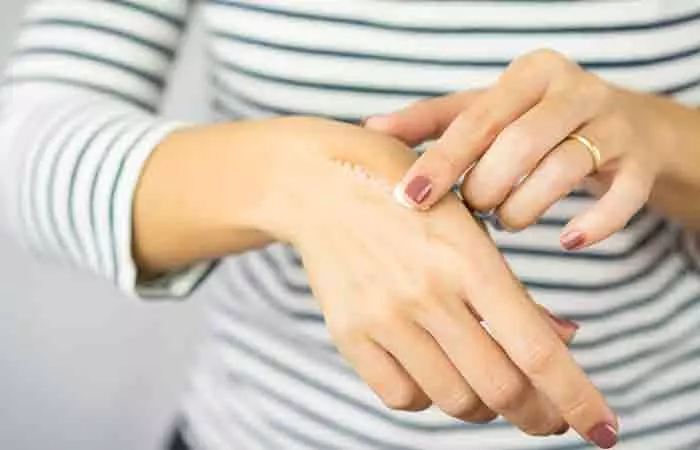
Burns may impair or destroy oil glands on the skin and cause excessive itching and dryness around the burn area. The disorganized collagen fibers that may trap nerve endings may also cause itching. Scratching the area might cause inflammation, making the situation worse.
Moisturizers and emollients hydrate the skin, reduce itchiness, soften the scar tissue, and speed up the healing process. You must apply the ointments carefully and gently if the burn scars are still healing. Also, use products that your doctor prescribes.
5. Cortisone Shots
Corticosteroid injections or cortisone shots are commonly used to treat keloid scars (9). It is a minimally invasive procedure in which steroids are injected into the scars to soften and reduce their size, pain, and inflammation.
Home remedies may help heal wounds and prevent scarring. While they cannot replace surgical methods, these remedies can help care for the scars at home. However, consult your doctor before using any of them to avoid adverse effects.
Home Remedies For Scar Management
1. Aloe Vera

Aloe vera gel can help heal partial-thickness burn wounds (10). It may help prevent scarring. To use it,
- Cut an aloe vera stem and collect the transparent gel.
- Apply it to the affected area.
- Leave it on for 20-30 minutes.
- Wash the area with water.
2. Honey
Research shows that raw honey has anti-inflammatory and wound healing properties (11). It can heal burn wounds and reduce scarring and contractures. To use honey,
- Apply fresh and raw honey to the dressing.
- Apply the dressing to the affected area so that the honey touches the scar.
- Leave the dressing on overnight.
- Wash the wound and change the dressing in the morning.
3. Coconut Oil

Extra virgin coconut oil is an excellent moisturizer and has anti-inflammatory and antiseptic properties. It can help heal the burn scars faster (12).
- Wash the area with water and pat it dry.
- Dip a sterile gauze in coconut oil and apply it to the scar.
- Leave it on.
- Reapply it on the scar multiple times a day for best results.
Note:
Honey and coconut oil can cause secondary bacterial infection. Apply them only on your dermatologist’s advice.
4. Bio-Oil
Bio-oil, a popular skin care product, is often used for managing burn scars. Its unique formulation includes ingredients like vitamin E, calendula extract, and sunflower seed, lavender, and rosemary oils, which are believed to help reduce the appearance of scars. But, the available evidence on their efficacy is scarce and inconclusive (13). To use the oil,
- Cleanse the affected area with mild soap and water, then pat it dry.
- Apply a small amount of Bio-Oil to the burn scar.
- Gently massage the oil in a circular motion until it gets absorbed into the skin.
- Repeat this process twice daily for a minimum of three months.
It can take anywhere from 18 months to 2 years for a scar to completely mature. If you want to know how to prevent scarring effectively, then it is best to treat it to eliminate the damaged tissues before they mature.
When Should You See A Doctor?
Usually, first-degree burns can be treated at home. However, if the wound worsens or does not heal, it enters the realm of dermatology, and it is wise to visit your doctor. If you have second or third-degree burns, it is important to visit the hospital. Be in touch with your doctor throughout the healing process to avoid infections and ensure proper healing and minimal scarring.
Infographic: 6 Effective Ways To Treat Burn Scars
Burn scars can be distressing and take a long time to heal. Some may heal fast, while severe and third-degree burns take months or years. The good news is there are treatments that help reduce the appearance of such scars. Since there are both invasive and non-invasive treatments, it is important to know the one suitable for you. Check out the infographic below to know more.
Some thing wrong with infographic shortcode. please verify shortcode syntaxBurn scars develop when you suffer from severe second or third-degree burns. Whether you have keloid scars or contracture scars, proper and timely burn scar management is important for proper and safe healing. You can opt for invasive procedures such as laser treatment or skin grafts or non-invasive procedures like silicone gel treatments or cortisone shots to improve the appearance of the scars. While home remedies may not be as effective as surgical procedures, you can use ingredients such as honey or coconut oil for scar management. Consult your doctor for more information on these procedures.
Frequently Asked Questions
What are some effective daily care practices for managing burn scars?
You can care for burn scars daily with a few simple tips. Gently cleanse the area, apply a fragrance-free moisturizer or silicone gel, use sunscreen to prevent discoloration, and gently massage the area with coconut oil to improve scar texture and appearance.
Do burn scars go away?
It depends on the severity of the scar. If it is a first-degree burn, it may heal within a week. If you have second or third-degree burns, they may not completely go away.
Is vitamin E good for scars?
No, while vitamin E may moisturize your skin, it may not reduce the appearance of scars (14).
Does Mederma really work for burn scars?
Mederma Gel is known to work on all types of scars, including those incurred from burns. However, depending on the severity of the sca,r it may take 3 to 6 months of regular application to heal it.
Illustration: Burn Scars Treatment: 11 Cosmetic Procedures & 3 Home Remedies
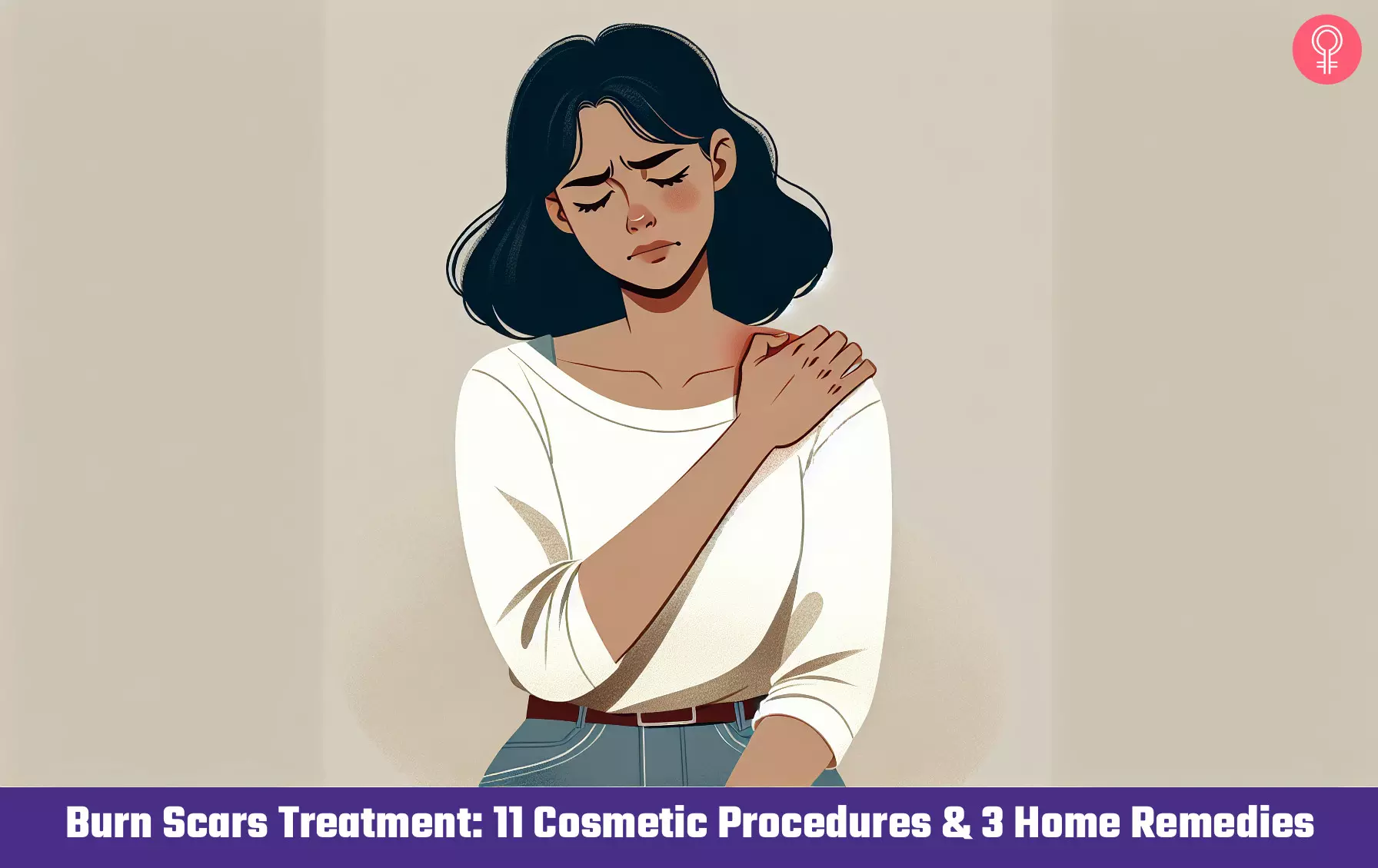
Image: Dall·E/StyleCraze Design Team
Learn how to get rid of burn marks with Dr. Rajdeep Mysore! This video will show you the right treatments and techniques to heal quickly and safely.
Personal Experience: Source
StyleCraze's articles are interwoven with authentic personal narratives that provide depth and resonance to our content. Below are the sources of the personal accounts referenced in this article.
i. “Can You Soothe Burn Pain and Scars at Home? Uncover the Truth!”https://medium.com/@trustinyourself0786/can-you-really-soothe-burn-pain-and-scars-at-home-uncover-the-truth-42ae1ed1fc0c
References
Articles on StyleCraze are backed by verified information from peer-reviewed and academic research papers, reputed organizations, research institutions, and medical associations to ensure accuracy and relevance. Read our editorial policy to learn more.
- Update on hypertrophic scar treatment
https://www.ncbi.nlm.nih.gov/pmc/articles/PMC4129552/ - Scar contractures hypertrophic scars and keloids
https://pubmed.ncbi.nlm.nih.gov/11735059/ - Laser in the management of burn scars
https://pubmed.ncbi.nlm.nih.gov/28784339/ - Surgical treatment algorithms for post-burn contractures
https://www.ncbi.nlm.nih.gov/pmc/articles/PMC5348756/ - Treatment of Post-Burn Scar Deformations Using Tissue Expansion and Endoscopy
https://www.ncbi.nlm.nih.gov/pmc/articles/PMC3188135/ - Z Plasty
https://pubmed.ncbi.nlm.nih.gov/29939552/ - Effects of silicone gel on burn scars
https://pubmed.ncbi.nlm.nih.gov/18672332/ - The Efficacy of Silicone Gel for the Treatment of Hypertrophic Scars and Keloids
https://www.ncbi.nlm.nih.gov/pmc/articles/PMC2918339/ - Triamcinolone acetonide intralesional injection for the treatment of keloid scars: patient selection and perspectives
https://www.ncbi.nlm.nih.gov/pmc/articles/PMC6063260/ - Effect of aloe vera gel to healing of burn wound a clinical and histologic study
https://pubmed.ncbi.nlm.nih.gov/7561562/ - Topical Application of Honey for Burn Wound Treatment – an Overview
https://www.ncbi.nlm.nih.gov/pmc/articles/PMC3188068/ - Burn wound healing property of Cocos nucifera: An appraisal
https://www.ncbi.nlm.nih.gov/pmc/articles/PMC2792613/ - Minor burn management: potions and lotions
https://www.ncbi.nlm.nih.gov/pmc/articles/PMC4653976/#:~:text=Products%20such%20as%20Bio%2DOil,effectiveness%20is%20limited%20and%20conflicting. - The effects of topical vitamin E on the cosmetic appearance of scars
https://pubmed.ncbi.nlm.nih.gov/10417589/
Read full bio of Dr. Seepika Jaiswal
Read full bio of Ramona Sinha
Read full bio of Anjali Sayee
Read full bio of Shiboli Chakraborti







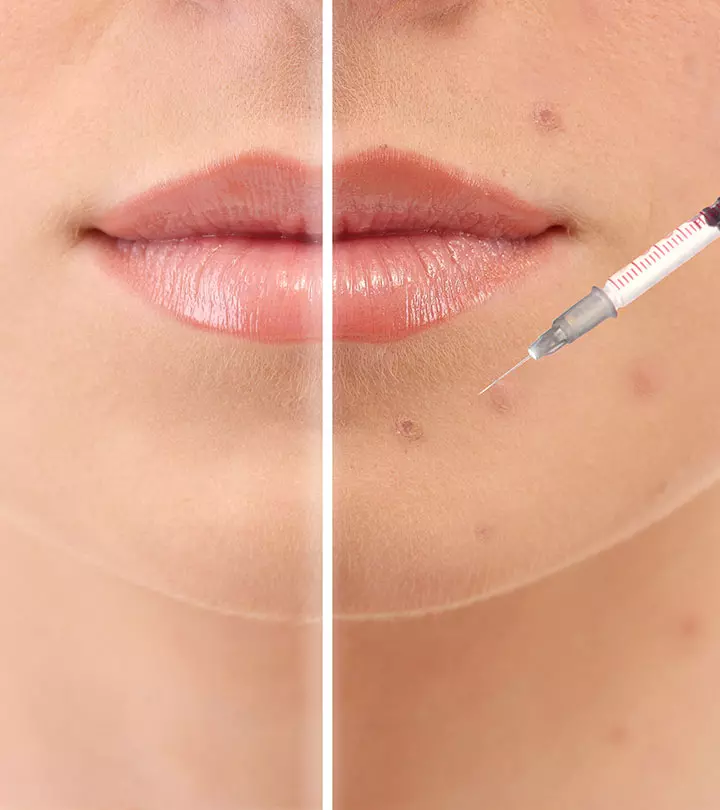
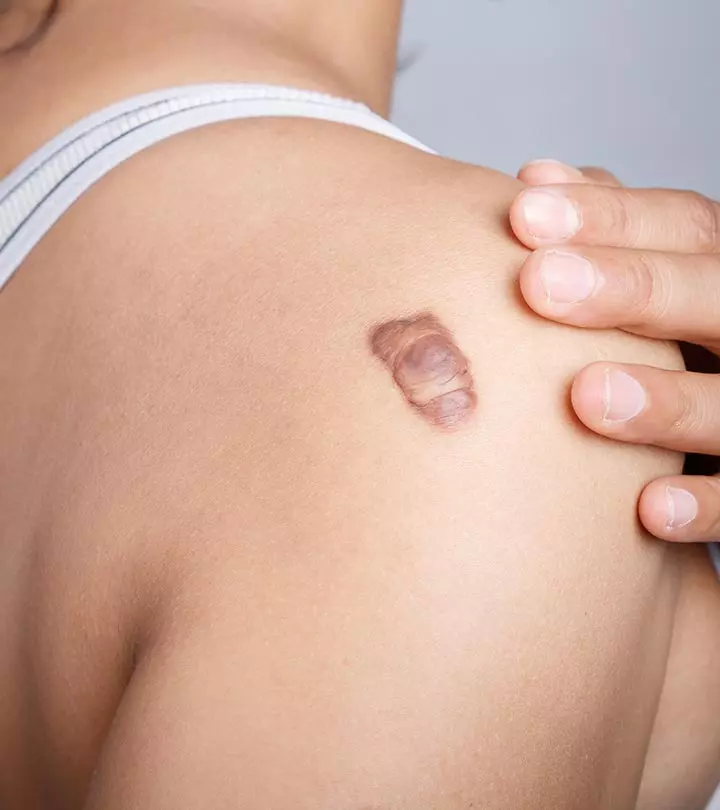
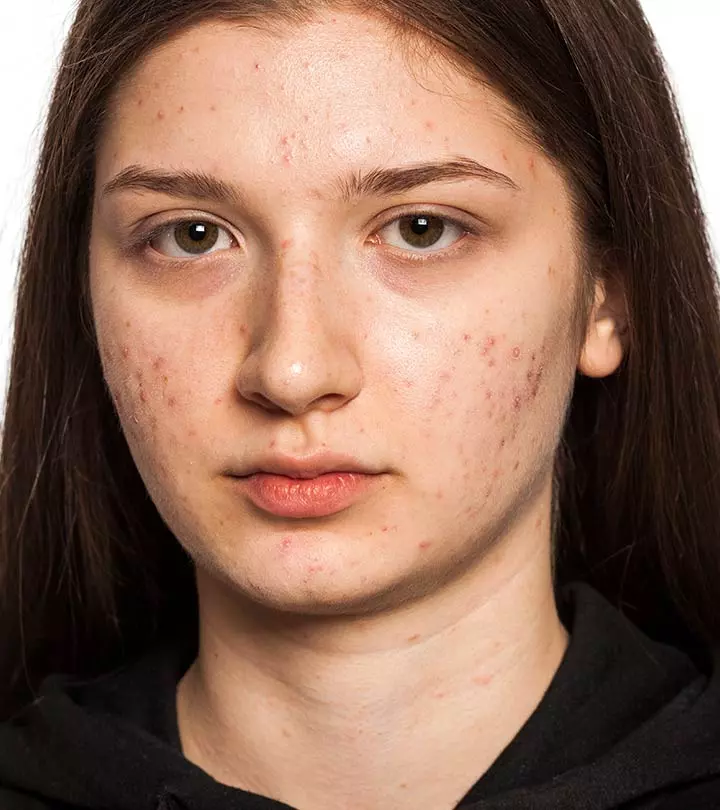
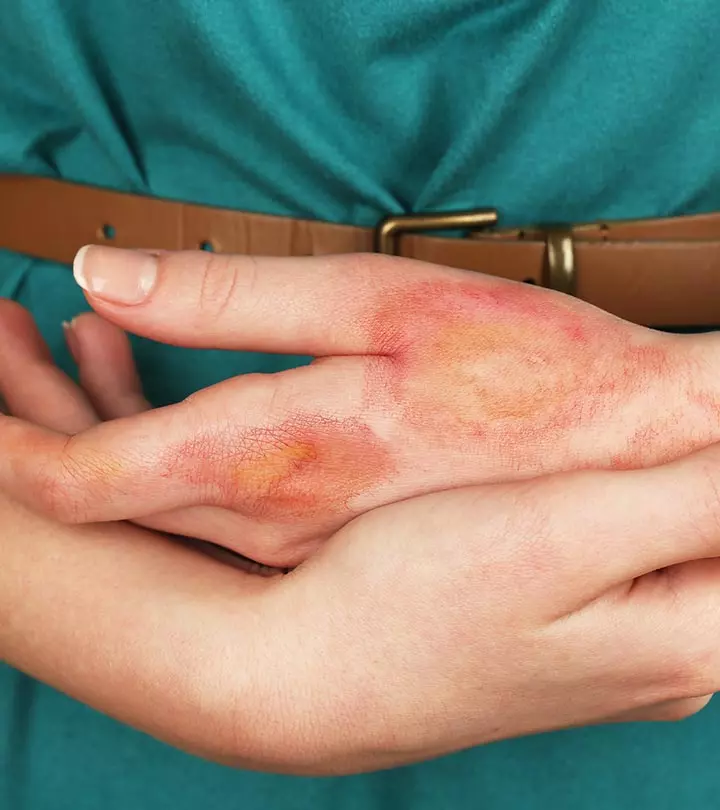
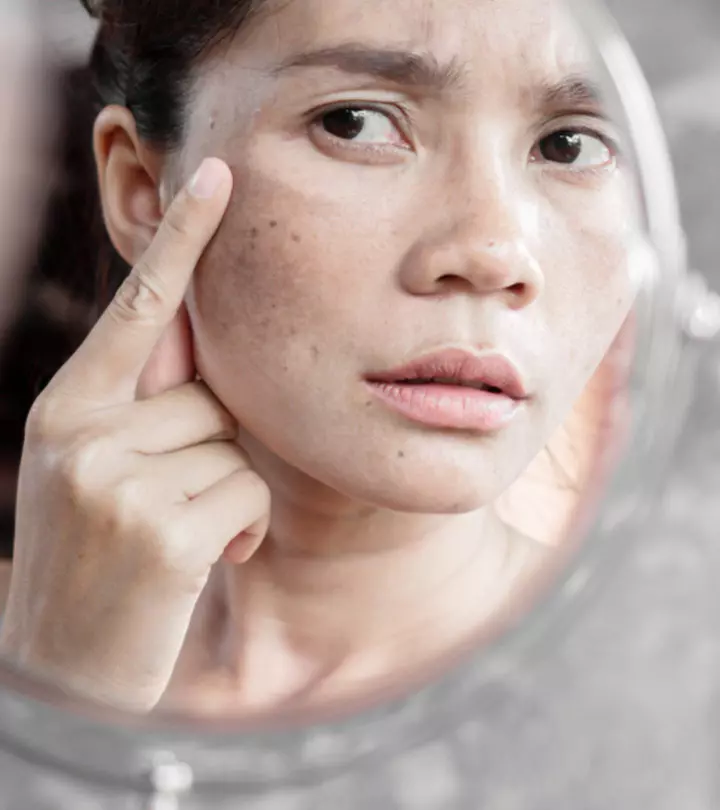
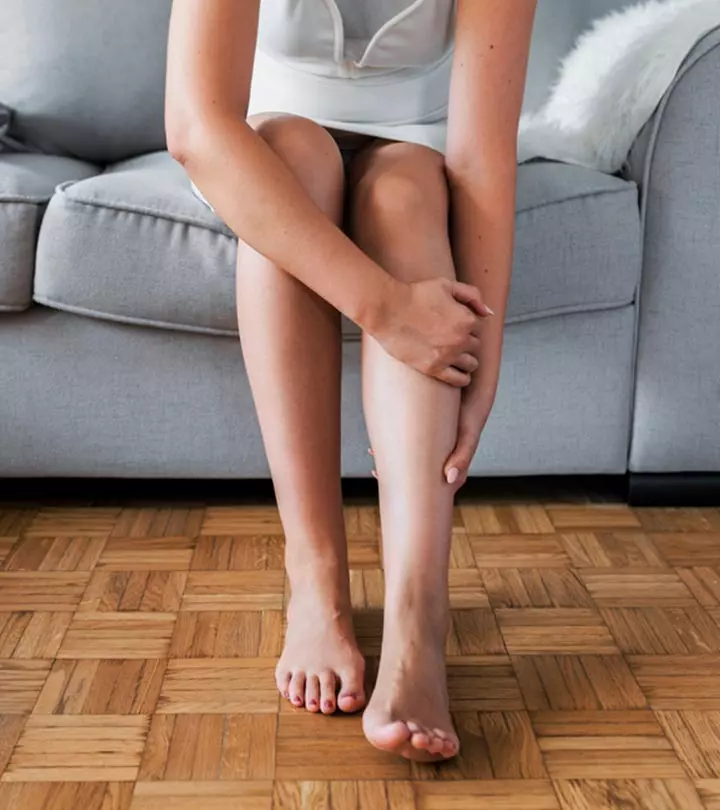
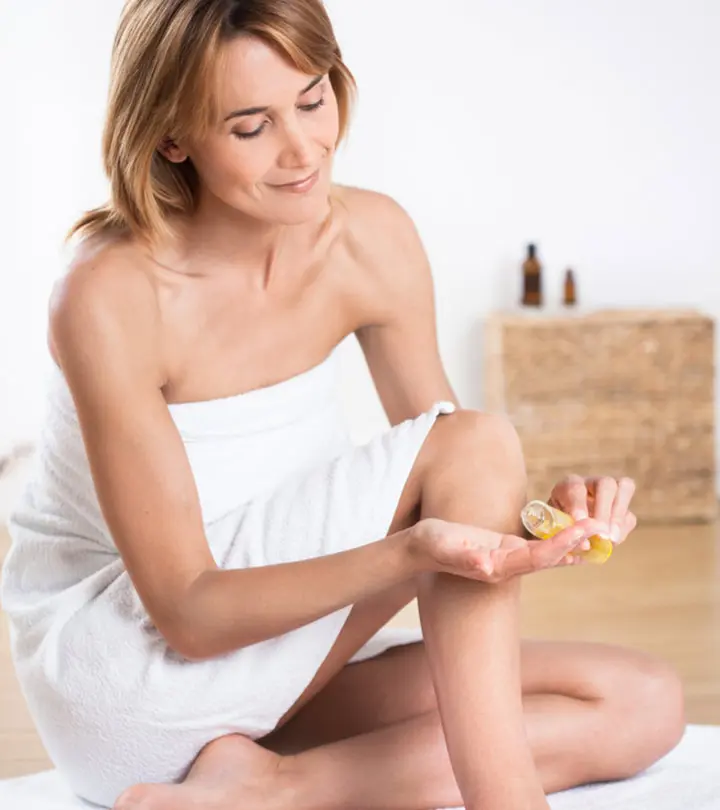
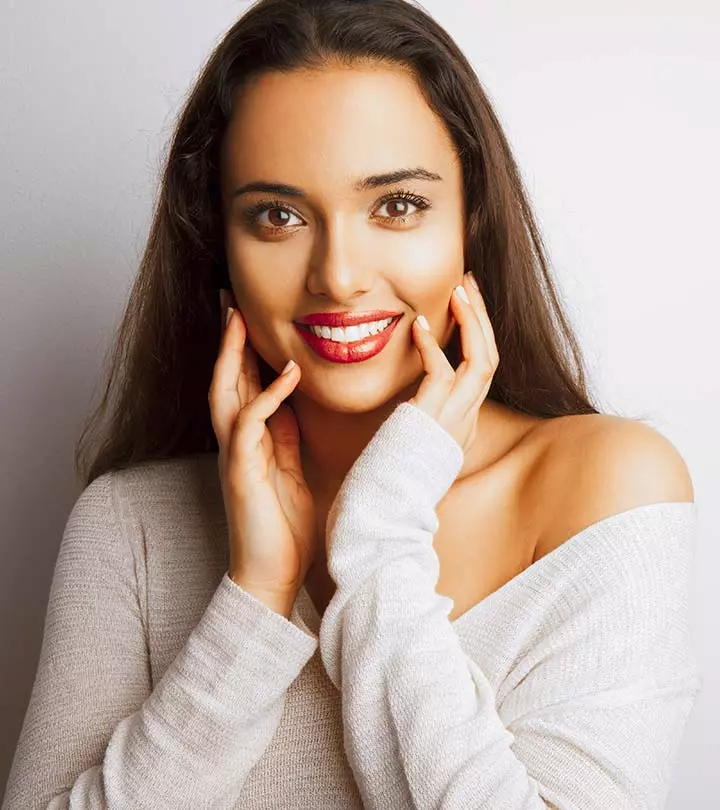


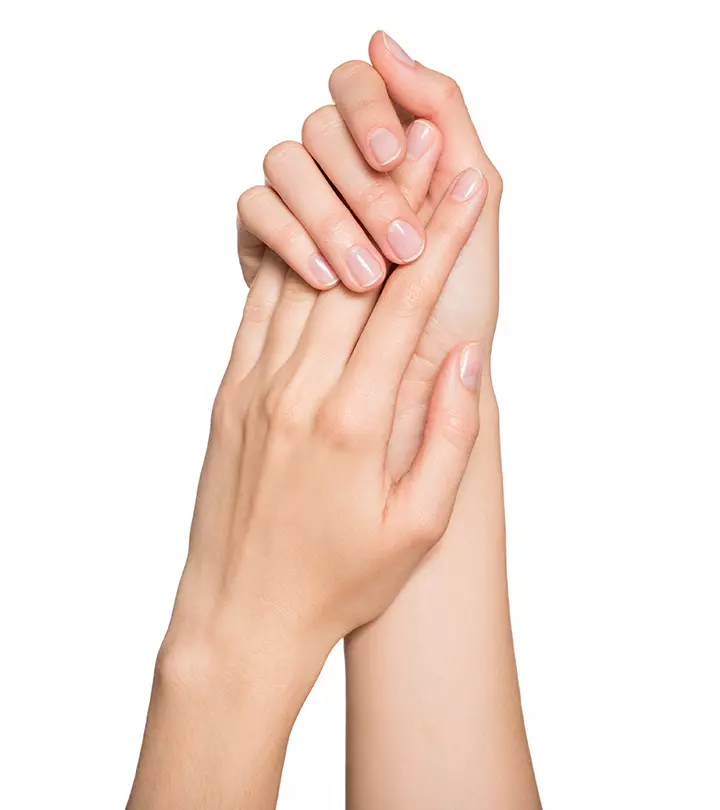


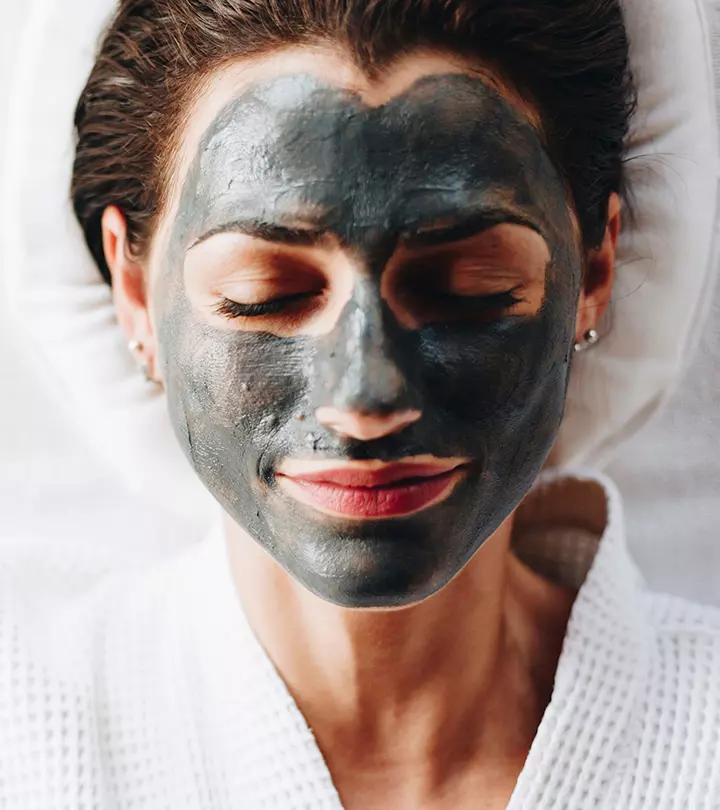
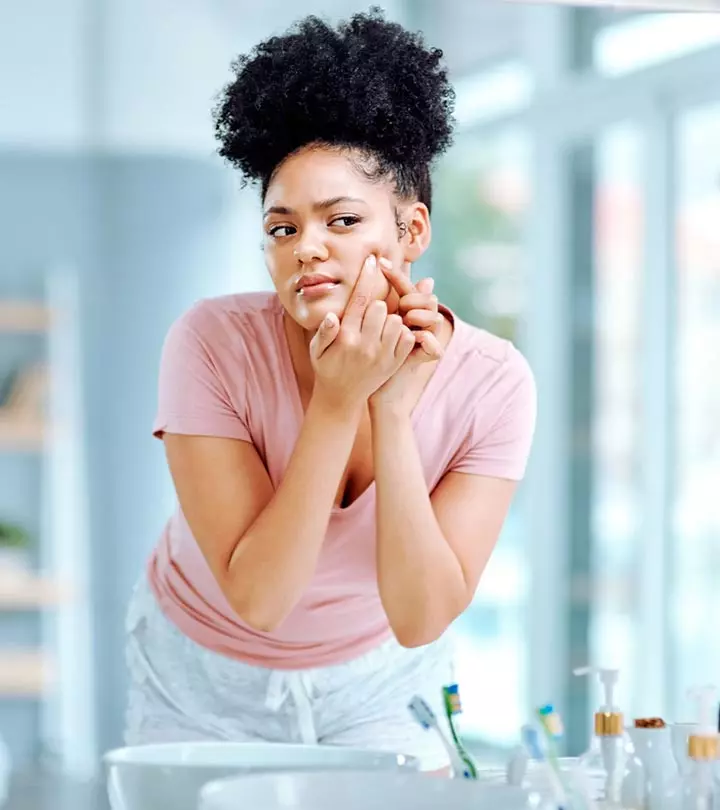


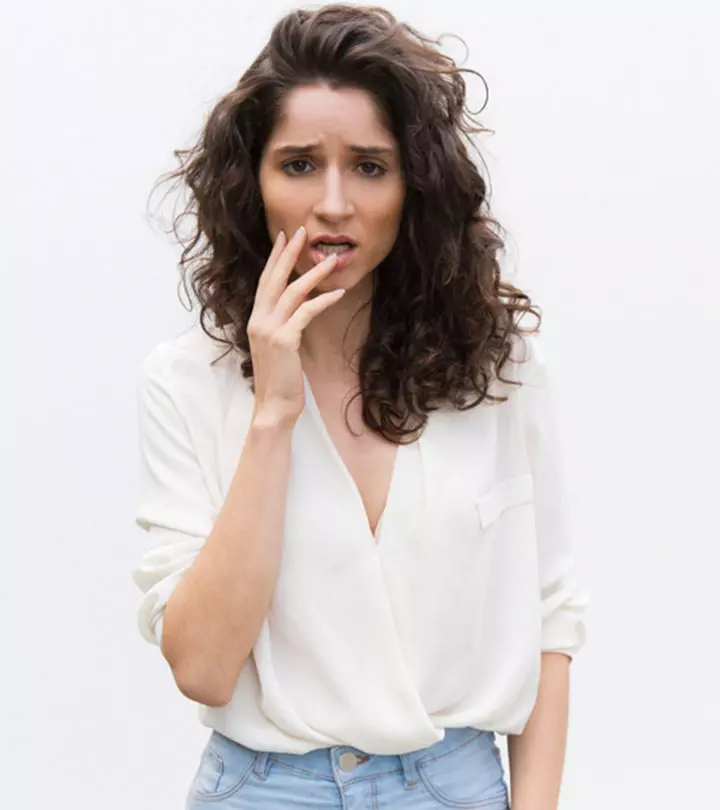
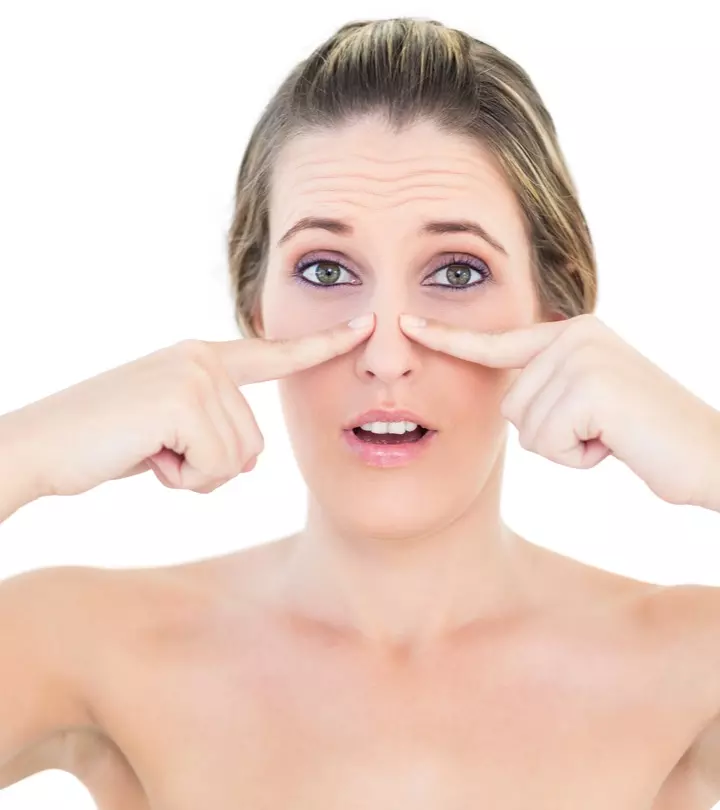

Community Experiences
Join the conversation and become a part of our empowering community! Share your stories, experiences, and insights to connect with other beauty, lifestyle, and health enthusiasts.